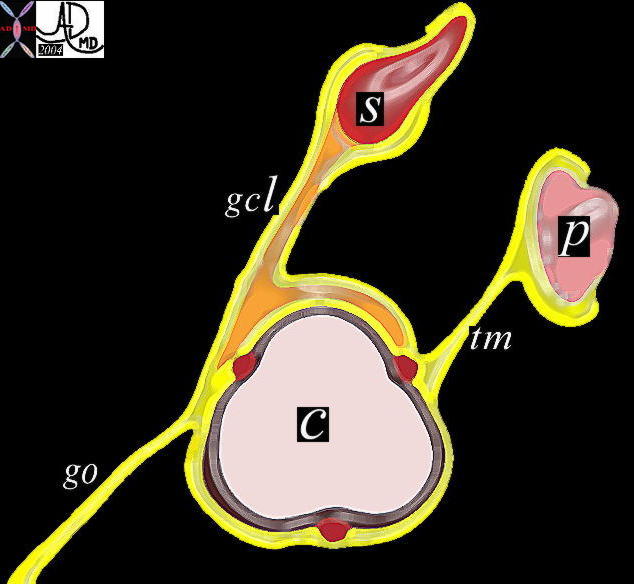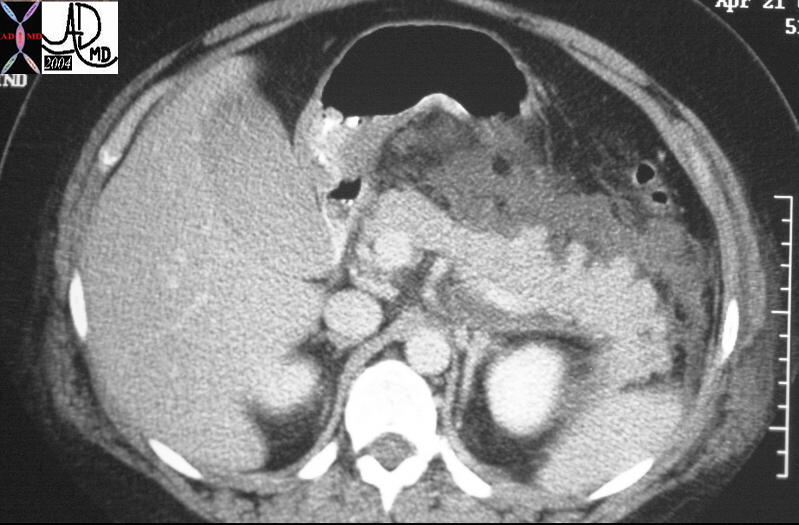|
The Common Vein Copyright 2007
The pancreas is characterized by its lack of a discrete fibrous capsule. It is surrounded by a sheath of areolar tissueor a thin connective-tissue capsule, which sends a fine process and septa between its lobules, and these septa carry into it the blood-vessels and nerves. The posterior peritoneum also acts as a barrier between the pancreas and the peritoneal cavity.
This is a very important diagram which is used repeatedly to define the omental and ligamentous relationships between the pacreas colon and stomach. The posterior peritoneum (yellow) lies partially surrounding the anterior portion odf the pancreas and gives rise to the transverse mesocolon which forms a ligamentous attachment as a double layer to the transverse colon. Disease o the pancreas can thus reach the colon by this route. 01443b05 Courtesy Ashley Davidoff MD P = pancreas c= transverse colon S = stomach gcl = gastrocolic ligament go = greater omentum tm = transverse mesocolon The transverse mesocolon attaches to the anterior surface of the head and the inferior aspect of the body and tail The posterior surface of the gland is devoid of peritoneum except for the tail. Thus, the head and body are retroperitoneal, and the tail is intraperitoneal, since it is covered within the splenorenal ligament. It is connected to the splenic flexure by the splenorenal and phrenicocolic ligaments. Application to Imaging
This CTscan through the pancreas in this patient with acute pancreatitis shows a relatively normal appearing pancreas with extensive exudate beyond the pancreas due to the lack of a protective capsule. Courtesy Ashley Davidoff MD 15730 |


